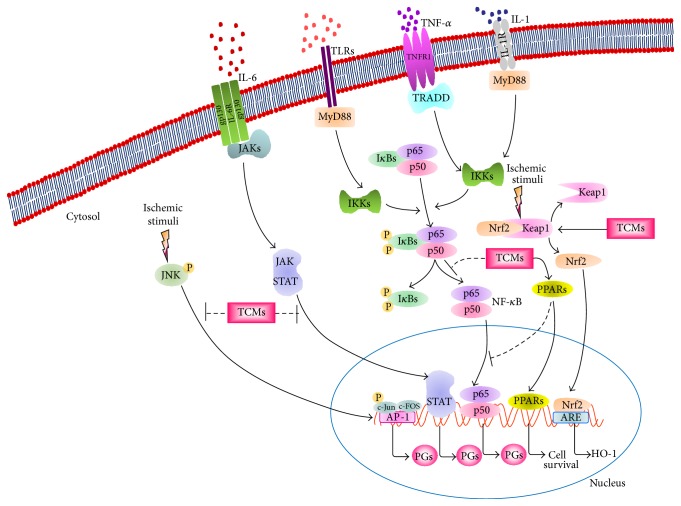Figure 2.
Schematic representation of the anti-inflammatory effects of traditional Chinese medicines through the regulation of transcription factors in the inflammatory cascade after cerebral ischemia. JAKs, Janus kinases; MyD88, myeloid differentiation primary response gene 88; TRADD, tumor necrosis factor receptor type 1-associated death domain; IκBs, inhibitor of NF-κB proteins; IKKs, IκB kinases; Nrf2, nuclear factor-erythroid 2-related factor 2; Keap1, Kelch-like ECH-associated protein 1; PPARs, peroxisome proliferator-activated receptors; STAT, signal transducer and activator of transcription; JNK, c-Jun N-terminal kinase; AP-1, activating protein-1; ARE, antioxidant response element; HO-1, heme oxygenase-1; PGs, proinflammatory genes. Thick solid lines with arrowheads indicate activation, and thin dotted lines indicate inhibition.

